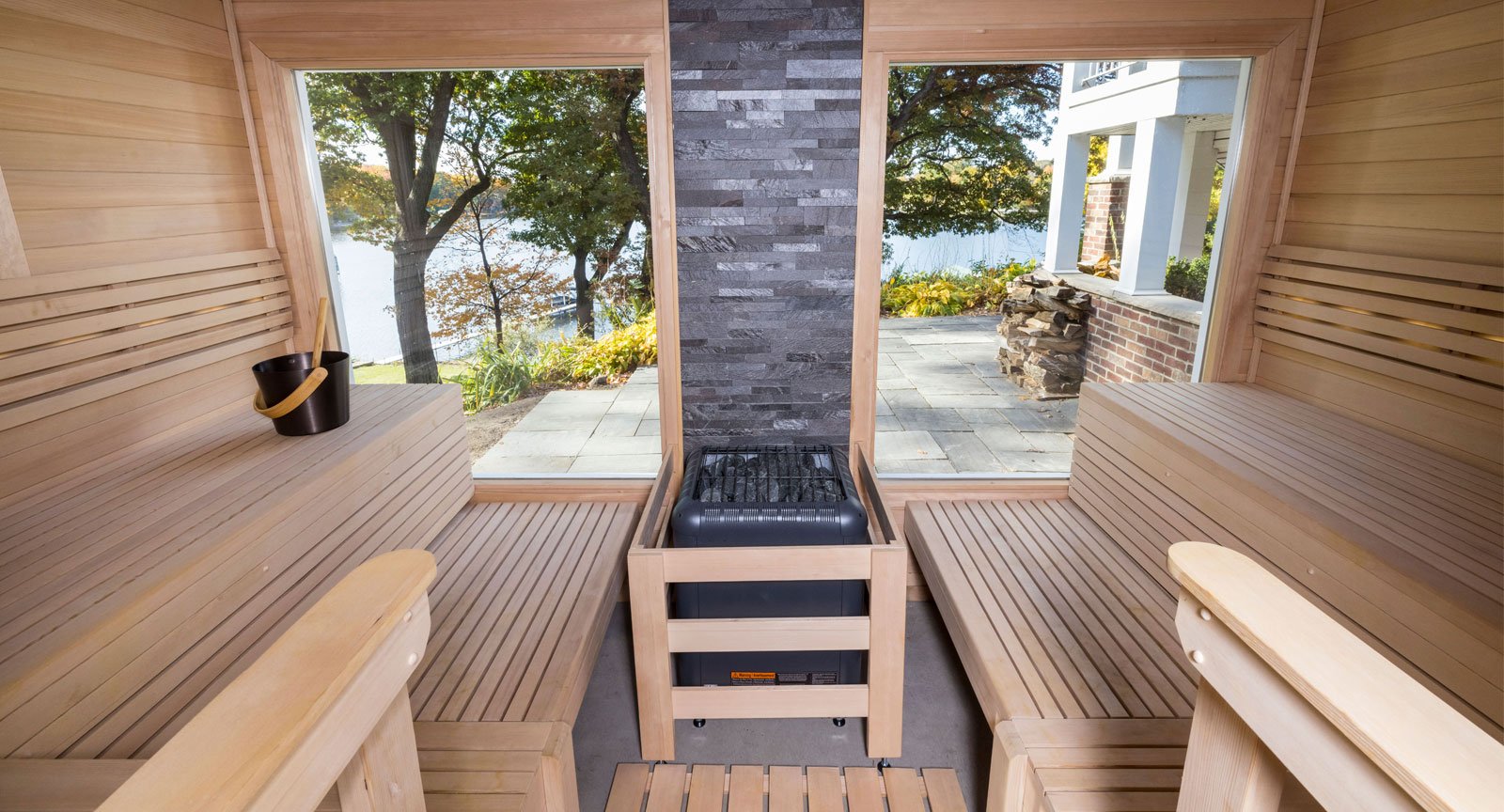Get This Report about Traditional Sauna
Get This Report about Traditional Sauna
Blog Article
An Unbiased View of Traditional Sauna
Table of ContentsRumored Buzz on Traditional SaunaSee This Report about Traditional SaunaThe smart Trick of Traditional Sauna That Nobody is Talking AboutTraditional Sauna Can Be Fun For Anyone
The majority of the weight lost in a sauna is water loss and is re-gained upon rehydrating. However, certainly sauna can be a crucial component of a healthy and balanced weight loss program. To consider the distinctions between traditional and IR saunas, I will separate these right into proven, theoretical, and produced distinctions.Hence, the most popular point in the saunawhich is at the ceiling straight above the sauna heateris commonly in between 185 and 190 F. Traditional Sauna. Claims that a typical sauna exceeds 200 F is just not real and not suitable for electric saunas marketed in the US. The temperature level for a far-infrared sauna is typically set in between 120 and 140 F; however, unlike the conventional sauna, the objective in and IR space is not to attain a high temperature
Due to this, the temperature level distinction is practically irrelevant, considering that extreme sweating leads to both sauna kinds, however the method of warming the body is different. In an IR sauna the bather will really feel warm and will certainly sweat profusely, but at a lot lower temperature levels. Hence, if the objective is to spend longer periods of time in the sauna, the IR sauna is an excellent option.

Traditional Sauna for Dummies
When the high temperature is attained, the components cycle on and off to preserve the heat. The majority of traditional sauna customers take pleasure in pouring water over the rocks to develop vapor to raise sauna moisture degrees. The benefits of putting water over the rocks include: making the area extra comfy, moistening the nasal flows, and allowing the use of aromatherapy by blending crucial oils with the water.
In a far-infrared sauna, the warmth waves pass through the body to efficiently heat up the body and increase the body core temperature level. To achieve this increased temperature, Far-infrared emitters develop infrared power which is close to the same wavelength as that which the body normally emitsoften referred to as the "Vital Range" of 7 to 14 microns), so the energy is well received by the body.
When the energy enters the body, it causes the body temperature level to raise and ultimately results in sweating. In an infrared sauna it is very important for the emitters/heaters to stay on practically continuously. Considering that there is no mass of rocks to keep warm, the sauna will cool if the emitters shut down.
As stated over, the sauna bather in an infrared space intends to place himself before operating emitters to get maximum gain from the warmth. The heating time for the two areas can be very various, depending upon just how the spaces are made use of. For a traditional sauna, a bather needs to permit 30-40 minutes for the space to accomplish a desired temperature level and to correctly pre-heat the rocks.
The 9-Minute Rule for Traditional Sauna
A well created sauna will commonly accomplish a temperature of 150-160 F in regarding 30-40 mins. For hotter temperatures, the space might need to heat for a longer duration.
To some, 15 mins was "lost" while the infrared energy heated up the wood panels as opposed to warming a body, while others discover a pre-heated area to be much more comfortable and believe an elevated starting temperature is helpful resources required to begin sweating. The length of suggested usage for each room is around the same (10-15 mins per session); however, due to the reduced air temperatures and the capacity to feel the results of infrared heat much faster than a conventional sauna, it is not uncommon for a person to spend a total of 20-30 official statement mins in an infrared sauna.
Conventional saunas have a tendency to be bigger (therefore make use of more electricity) than infrared saunas, although conventional saunas are definitely available in one and two individual dimensions also. For a two-person typical sauna, 5x6 or 5x7 size is most prominent. The top bench can pleasantly seat 2 or 3 individuals and is also long sufficient to lie down during the sauna session.


The typical expense per kWH of electrical power in the united state is approximately $0.11, so a 4.5 kW heating system will certainly cost approximately $.50 to compete one hour, if the heater runs continually for one hour. Generally a sauna heater will compete 75% of the very first hour and 50% of subsequent hours on since the aspects cycle once the established temperature is accomplished.
Little Known Questions About Traditional Sauna.
A 2 person far-infrared space is generally physically smaller than a traditional sauna, usually concerning 4' x 4' or smaller. The IR heating unit is commonly 1.5-1.7 kW utilizing a 120 volt 15 amp plug-in service. Since the space can be used faster than a sauna area, we will certainly presume the area is made use of for to of an hour consisting of warm up time.
There is a hardly ever discussed distinction in the social experience between the 2 areas. While our society has actually shed a few of the social benefit of the standard sauna experience, it can be really socially fulfilling. From family members time in the sauna, to heart-felt conversations with better halves, to sauna partiesthe typical sauna experience can bring about intimate interacting socially.
The majority of greater end click here for more info infrared rooms consist of colored light treatment, noise systems and full-glass fronts.
Report this page